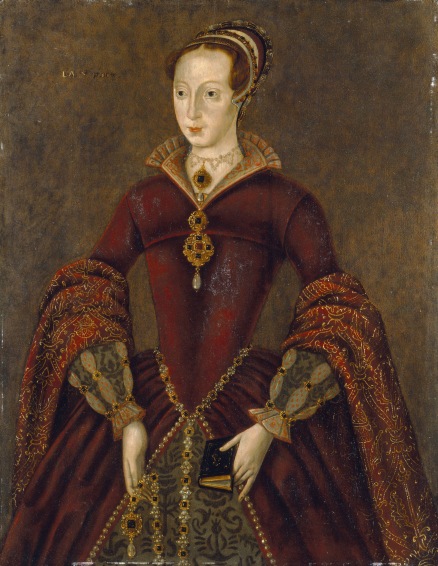
There is no question that Jane Grey was for all intent and purposes a prodigy, even for her times. Today we expect children to learn the basics. But back in the sixteenth century, things were different, especially for noblewomen, who were expected to make their families proud by finding a suitable husband who’d make a powerful ally. In the case of Jane Grey, being the eldest of her sisters, meant she had to meet most of society’s expectations. Having royal blood, and being related to the King through her mother, meant that she had to work harder than Katherine and Mary, and just as hard -if not more- than her bastardized cousins, Ladies, Mary and Elizabeth Tudor.

But Jane Grey exceeded everyone’s expectations, especially her father whose continual indulgence made her appreciate him more than her mother who was stricter. When her thirst for knowledge became evident, she became a ward in the Parr household. Queen Dowager Kathryn Parr had recently remarried, for the fourth and last time to her true love, Sir Thomas Seymour, Baron Sudeley. The couple’s manor, Sudeley Castle, became a safe haven for many intellectual curious girls like Jane. Among them was Jane’s cousin, and Kathryn’s favorite royal stepdaughter, lady Elizabeth Tudor. Elizabeth Tudor was nearly Jane’s equal, but after she fell from grace, Jane took her place in Kathryn’s heart.
Jane lamented the Queen Dowager’s death, and after she was returned to her parents, she berated them and begged them to send her back. She wrote how unfair they were treating her. Several historians and novelists have taken this as ‘proof’ that Jane Grey’s mother was a wicked woman and her husband, an indolent fool, or her partner-in-crime who saw their daughter as nothing more than tool in their quest to gain more power. As easy as it is to turn this into a dualistic tale of good and evil, heroes and villains and so on; the truth is that her parents were neither of these things.
Lord Henry Grey, Marques of Dorset and (after the fall of Somerset) Duke of Suffolk, and Frances Brandon, were self-serving aristocrats. This is not unusual given that a family’s number one interest was in promoting their children to other courtiers in the hopes that they would marry into equally or more powerful families to further their riches. Family mattered more than everything else, and this is where religion comes into play as well because it was believed that the best way to raise successful wives and lords, was to instill the fear of god in them. As a result, Jane’s intelligence became highly by Reformers in England and abroad.

Soon after, she became one of the leading figures in the Evangelical movement. In 1552, shortly after Somerset’s execution, her family gained more prominence. Renown Protestant figures like the pastor Michael Angelo Florio whose congregation looked after Protestant exiles, praised her and held her as an example for other Protestant women to follow. He wasn’t the only one, older women like William Cecil’s wife, Mildred Cooke, thought the same. In a letter she wrote in Greek, she compared the adolescent girl to the fourth century bishop of Caesare, Basil the Great, and gave her a copy of one of his many works. Her former tutor Bullinger introduced her to the works of Theodore Bublinger who had translated the Koran -this has led some historians to believe that she might have also been taught Arabic. As her popularity among scholars grew, Jane’s self importance also grew and so did her arrogance. Her father, by this time Duke of Suffolk, together with the Marquis of Northampton (William Parr -Katherine Parr’s brother), and John Dudley, Duke of Northumberland, supported the King in his reissue of the prayer book which completely outlawed the mass and introduced more radical reforms inspired by Swiss and German reformers such as Bullinger and Ulm. There were few opponents in Edward’s council to these new reforms, but among them was Archbishop Thomas Cranmer of Canterbury who had been a good friend of the “Good Duke” (Edward Seymour) and believed these reforms were too radical and too soon to be implemented. Also in this year, Henry began to make plans for his eldest daughter and heir’s betrothal. Jane was not he first bride her father in law had in mind for Guildford. Margaret Clifford, another descendant of Mary Tudor and Charles Brandon was his first choice but her father said no since Guildford was only a fourth son and in spite of his pleas and the king’s, the earl’s mind remained unchanged. As the king’s health got worse the following year, he gave his blessing to Northumberland and Suffolk to wed their four teenage offspring. In a triple marriage ceremony in May 25 1553, Jane was married to Guildford, Katherine to Lord Herbert, and Catherine Dudley to Lord Hastings. With the pieces set, it was only a matter of time before Edward’s passing led to their final move.
Sources:
- Lisle, Leanda. Tudor. Passion. Manipulation. Murder. The Story of England’s Most Notorious Royal Family. Public. 2013.
- –. The Sisters who would be Queen. Harper. 2009.
- Ives, Eric. Lady Jane Grey: A Tudor Mystery. Wiley-Blackwell. 2009.
- Whitelock, Anna. Mary Tudor: Princess, Bastard, Queen. Random House. 2010.
- Porter, Linda. The Myth of Bloody Mary. St. Martin Press. 2008.
- Borman, Tracy. The Private Lives of the Tudors. Grove Press. 2016.

Reblogged this on Lenora's Culture Center and Foray into History.
LikeLiked by 1 person